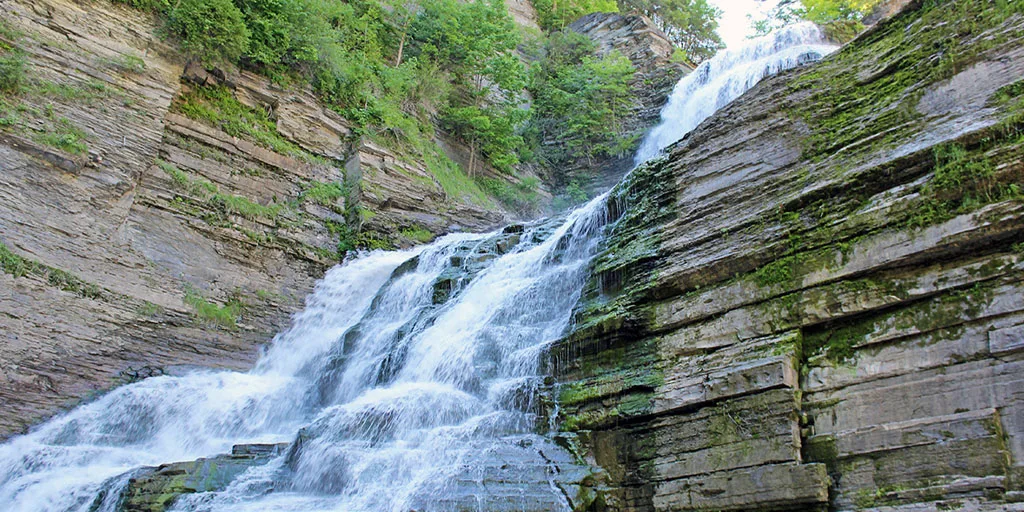The 3-Minute Rule for Robert H Treman State Park
Wiki Article
Not known Facts About Robert H Treman State Park
Table of Contents3 Simple Techniques For Robert H Treman State Park Campsite PhotosRumored Buzz on Directions To Robert Treman State ParkNot known Factual Statements About Robert H Treman State Park Dog Friendly Robert H Treman State Park - An OverviewThe Ultimate Guide To Directions To Robert Treman State Park
Hiking along the Chasm Path Hiking along the Canyon Trail Incredible signs along the Canyon Trail These path maps were posted along the path and I was rapidly stressed with them. These placards were little in dimension, natural shades, and were extremely descriptive (directions to robert h treman state park). The little human icon got on a various spot on each of the placards, revealing your progress on the trail, gas mileage continuing to be, and what the altitude would certainly be.Swimming is not allowed any type of location except for the swimming area by reduced drops. We did cross the river at one point and also saw some people loosening up in one part of the slower stream. Lower Falls Swimming Area We resembled little children when we reached completion of the gorge trail to see this attractive waterfall as well as swimming location.
We packed out swimsuits in as well as there is a transforming area right by the natural swimming pool. We each deviated on the diving board prior to changing back right into treking gear as well as heading back along the Edge Route. The swimming location is open climate and also water problems reliant from 11am to 6pm.
On August 31, 1916, Robert and Laura Treman bought this grist mill, which Robert Treman's great uncle had developed regarding 77 years earlier. In 1920, they contributed 387 acres, including the mill, to the State of New York City, to end up being Enfield Glen Booking. In the 1920's the mill was restored and transformed to a structure.
Getting The Robert H Treman State Park Camping To Work
After Robert H. Treman's death in 1938, the park was renamed in his honor. Jared Treman was the initial proprietor as well as head-miller of this Grist Mill.The first gristmill refuted in the 1830s, yet Jared Treman replaced it with another gristmill that ran from 1839 throughout of the 19th century. Jared Treman's mill is listed on the National Register and the State Register of Historic Places as well as serves as the Park's Mill Museum.


More info More Indicators from within the mill: Briefly, As you discover the mill, you will locate additional indicators with more information about the different facets of the mill. You may locate it useful to maintain this summary in mind: The miller evaluated the ground below on the very first flooring.
The Facts About Robert H Treman State Park Revealed
Back on this flooring, millstones ground grain right into dish. Next, on the second flooring, bolting reels divided dish into its elements: flour, middlings, as well as waste. Middlings were more cleaned. Right here on the very first flooring once more, middlings were reground. On the second floor, middlings were rebolted. A mill worker loaded flour into sacks on his floor - directions to robert h treman state park.The following is a simplified description of the mill's handling system. At some time after 1870, the headmiller of this mill transformed it to the New Process system of grinding wheat.
For the very first grind, the miller maintained the millstones reasonably much apart in order to create as lots of middlings (unground endosperm of wheat) as feasible. After being divided from the remainder of the meal and cleansed, the middlings were reground on an additional collection of millstones. The miller kept these millstones close together in order to produce as much flour as feasible.
Water spurting though the wind turbine just outside the mill offered the power to run all the machinery. Pulleys for belts and equipments for chains are visable throughout the mill.
Some Known Facts About Camping Near Robert H Treman State Park.

After the grain was weighed, and lift lugged it to the 3rd flooring for cleaning. look at more info This scale once had a large receptacle over the rectangle-shaped base you see on the flooring. The miller poured the grain into the hopper, causing the receptacle to sink. The base was attached to the equilibrium beneath the floor.
Instead, the miller maintained a percent of the grain as a toll. The toll was established by law, but was typically about 10%. robert h treman state park ny. As a result of this payment method, the miller had to consider the grain properly if he wished to maintain his organization and also great credibility. The miller depended upon the dress, or pattern of grooves, reduced into his millstones to successfully create top quality flour.
The miller took the stones out of equipment so he could dress them while the remainder of the mill kept running. Next he got rid of the millstone situation. After that he used a crane to lift and also flip the top, or runner, rock. The miller remained on the stone's grinding surface area and also cracked away at it with hand-held steel devices called mill bills.
Little Known Questions About Robert H Treman State Park Campsite Photos.
You can see a dressed millstone outside the cellar, under the veranda. Today we think about the Midwest as America's wheat belt, but in the early 19th century, the wheat belt was right here in western New york city. Wheat was the biggest income source for farmers in this area. By the late 19th century, nonetheless, wheat farming was in decline.Please visit one of our local supporters - Watercure Usa Best Water Purification System
Report this wiki page